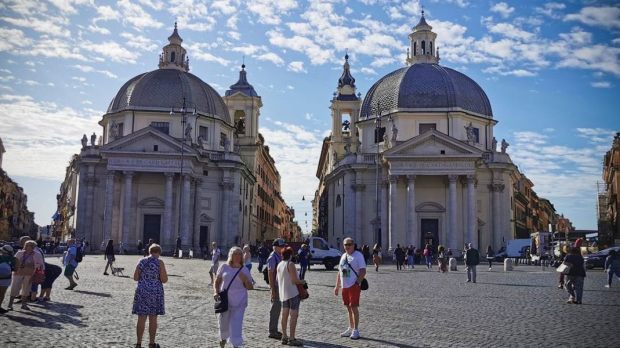Lenten Campaign 2025
This content is free of charge, as are all our articles.
Support us with a donation that is tax-deductible and enable us to continue to reach millions of readers.
Rome, the Eternal City, is known for its plethora of beautiful churches. It is estimated that there are more than 900 churches in Rome, but why do they need so many?
The easy answer is that Rome is the capital city of the Catholic faith. Of course there would be the largest number of churches in the city surrounding the Vatican, but to better understand where all these churches came from we have to look at the history of Catholicism.
Italy’s Wonders notes that in pagan Rome, the people whom the Empire conquered were free to worship in the traditions of their cultures. However, Christians were not afforded this concession.
In the early years of Christianity, the Roman Empire shunned the budding religion and made it illegal to worship Christ. For over 300 years Christian Masses were celebrated in secret, lest the congregation fall under the fierce persecution of the Roman Legion. In hiding, Christians gathered in small congregations, usually worshiping out of the clerics’ houses.
In 313 Emperor Constantine announced that it would no longer be a crime for Christians to worship, but this did not immediately unite all of these small congregations, who had become used to celebrating Mass with their communities. With the edict, which effectively decriminalized the Christian faith, many of the houses where they worshiped in secret were renovated to become full-time churches.
In 380, under the rule of emperor Theodosius, Christianity became the official religion of Rome. This led to a surge of church building, as now that the royal family was worshiping the Christian Triune God, all the people — about one million– needed places to worship as well.
As time went by, more and more houses of Christian worship were constructed to meet the demands of the most populated city in the ancient world. By the medieval era, it became a standard practice for wealthy families to build their own churches. These churches were built on a grand scale and featured splendid art, but it was also a competition between these influential families to build the most beautiful and well attended church.
Today, there are more than 900 churches in Rome, a number that rises to nearly 1,600 if chapels in private residences, palaces, and convents are taken into account. The vast majority of these buildings maintain their function as places of worship and even more of them are enjoyed by tourists.
These ancient buildings stand as a monument to the enduring history of the Catholic Church, in a city that is still about 80% Catholic.

